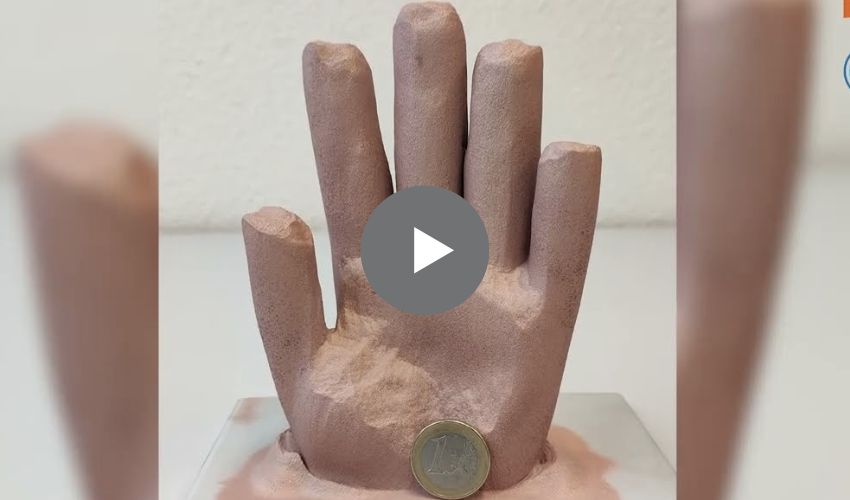Top 5: How Cold Spray Technology Offers Faster Additive Manufacturing

Hello everyone, and welcome to our top 5 videos of the week! As always, we have an exciting and educational select of 3D printing video content for you. This week’s range from cold spray technology for additive manufacturing, an interview about 3D printing in an academia and research context, to country-specific information (in this case, about Singapore) about how users are adopting 3D printing in the engineering and manufacturing industry for healthcare. We also have a 3Dnatives original video from the lab, in which Elliot reviews the UltiMaker S7! For those who enjoy
Top 1: Additive Manufacturing Using Cold Spray Technology
This video is from University of Technology of Belfort-Montbéliard (UTBM), an engineering school located in France. We see their work on cold spray additive manufacturing – this being the technique of using metal powder particles to form a coating by ‘ballistic impingement’ upon a substrate, causing them to adhere to the surface. This technology can produce strong metal parts: the example in the video is a model of a hand. Further advantages include faster build rates, minimal surface prep required. As heat is not involved, common issues associated with heat when 3D printing are not an issue. Parts are also easier to repair.
Top 2: How Singapore Uses 3D Printing In Healthcare
Next up, we have a video about how Singapore uses 3D printing for their healthcare sector. We find all about country-specific examples, such as a patient in 2003 who was treated for nose cancer by Professor Chua Chee Kai using a 3D-printed surgical model. From the video, we also learn about the potential of the Singapore Centre for 3D Printing, a new research facility which aims to be the world’s leading institute for 3D printing research and technologies. Clearly, the country believes that 3D printing could bring great strengths to manufacturing and engineering and wish to establish themselves as a strong player in the industry in the future. If you want to learn more about the specifics of Singapore’s turn to 3D printing, check out the video below.
Top 3: What Did 3Dnatives Think of the UltiMaker S7?
Here at 3Dnatives, we like to not only provide you research and news content, but we also see the value in doing our own tests and reviews of new printers, scanners, and other products on your behalf. With the UltiMaker S7, we have done just that. The UltiMaker S7 is the first printer to come from the company since the merger between Ultimaker and MakerBot, and it offers an advancement of the previous FDM printers in the line. Elliot tested the printer, checking it for new features, ease of use, print quality, and his overall impression of the product, and you will find all the details in the video below! His article on the printer is here.
Top 4: A Scientist’s Perspective On 3D Printing for Biological Research
Interviews are a valued method to gain insight into a topic, including manufacturing and science, in an accessible and interesting way – this video certainly shows that! In this clip, we hear from Quinton Smith, a researcher at University of California Irvine (UCI) on a number of his research projects, including the use of 3D printing to assemble the tissues needed for organ growth for patients with liver diseases, for example. Bioprinting is of course one of the most exciting applications of 3D printing and has the potential to replace transplants in the future.
Top 5: Ceramic 3D Printing For Conservation
We previously wrote about ceramic 3D printing and its application in producing distinctive art and design pieces, but did you know it can also be used for conservation? This video shows just that! The technology is used in the video to produce a series of reef tiles, which mimic the structure of natural reefs. As we learn from the description, these reef tiles have been made to be used to prevent the build up of sediment (a major cause for concern for coral). The pieces were made with terracotta clay and then fired at 1125 degrees Celsius.
What do you think of our top 5 videos, including cold spray technology for additive manufacturing? Let us know in a comment below or on our LinkedIn, Facebook, and Twitter pages! Don’t forget to sign up for our free weekly Newsletter here, the latest 3D printing news straight to your inbox! You can also find all our videos on our YouTube channel.







